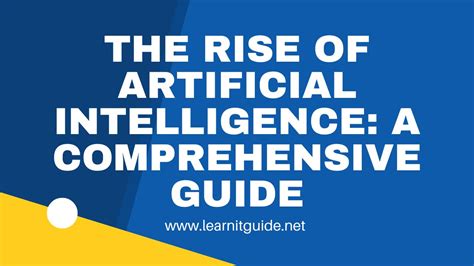Introduction

Artificial intelligence (AI) has emerged as a transformative force in modern society, revolutionizing industries and reshaping our daily lives. With its unparalleled capabilities, AI is poised to drive unprecedented growth and innovation in the years to come.
Exploding Market Growth
The global AI market is experiencing exponential growth, projected to reach a staggering $190 billion by 2025. This surge is fueled by the increasing adoption of AI across various sectors, including healthcare, finance, manufacturing, and transportation.
Transforming Industries
Healthcare: AI-powered systems are revolutionizing healthcare, enabling early disease detection, personalized treatment plans, and remote patient monitoring. According to the World Health Organization (WHO), AI could potentially save up to 1.6 million lives annually by 2030.
Finance: AI-backed algorithms are used for fraud detection, risk assessment, and personalized financial advice. Research from Deloitte estimates that AI could generate up to $300 billion in value for the financial services industry by 2025.
Manufacturing: AI-driven automation and optimization techniques are transforming manufacturing processes, increasing efficiency, reducing costs, and improving product quality. The International Federation of Robotics (IFR) forecasts that the global industrial robot market will reach $74.1 billion by 2026.
Transportation: AI-powered technologies are revolutionizing transportation, enabling autonomous vehicles, smart traffic management, and optimized supply chain logistics. The McKinsey Global Institute predicts that AI could contribute up to $1.5 trillion to the global transportation industry by 2030.
Key Applications of AI
Speech Recognition: AI enables devices to understand and respond to spoken language, creating new possibilities for hands-free communication and customer service.
Natural Language Processing: AI-powered systems can analyze and generate human-like text, revolutionizing content creation and customer engagement.
Computer Vision: AI algorithms can recognize and interpret images, videos, and other visual data, powering applications such as facial recognition and medical imaging.
Machine Learning: AI-driven algorithms learn from data and improve their performance over time, enabling predictive analytics and personalized recommendations.
Pros and Cons of AI
Pros: Enhanced efficiency, improved decision-making, increased productivity, and personalized experiences.
Cons: Potential job displacement, algorithmic bias, data privacy concerns, and ethical considerations.
FAQs
1. Is AI a threat to human jobs?
AI can automate tasks, but it also creates new jobs in areas such as data science and AI development.
2. Can AI be biased?
AI algorithms can be trained on biased data, leading to inaccurate or unfair results.
3. How can we ensure AI is used ethically?
Ethical guidelines and regulations are necessary to guide the responsible use of AI and prevent its misuse.
4. What are the future prospects for AI?
AI is expected to continue its rapid growth and transformative impact, revolutionizing industries and enhancing our daily lives.
Conclusion
AI has emerged as a powerful force driving innovation and growth across industries. With its immense potential and wide-ranging applications, AI is poised to shape the future of society by enhancing efficiency, improving decision-making, and creating new possibilities. As we embrace the transformative power of AI, it is crucial that we also address the ethical considerations and potential risks associated with its use.
